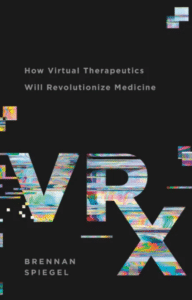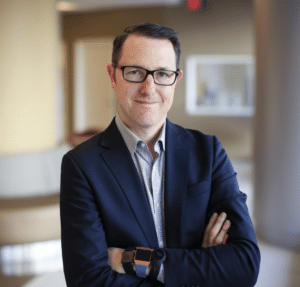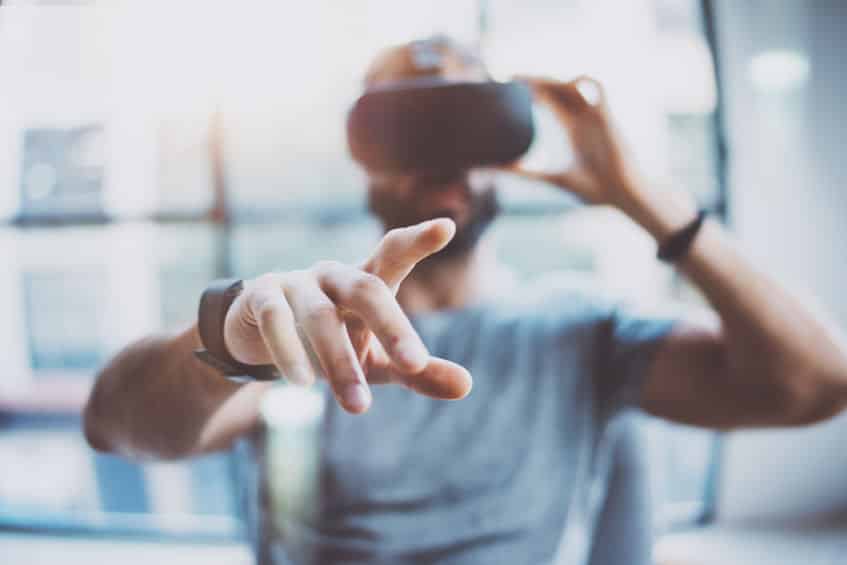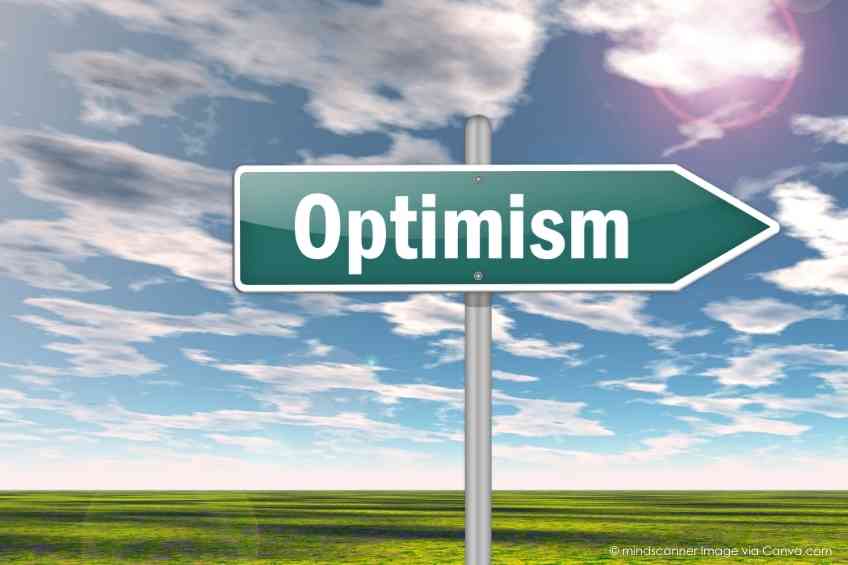In The Matrix, Morpheus tells Neo, “If real is what you can feel, smell, taste and see, then real is simply electrical signals interpreted by your brain.” It’s an idea meant to lead the audience towards questioning their own reality. But in a strange way, it also supports the legitimately of experiences had within an artificial world—a concept Dr. Brennan Spiegel, author of VRx: How Virtual Therapeutics Will Revolutionize Medicine, certainly understands. WellWell recently caught up with Dr. Spiegel to talk all things VR and how it’s being used in hospitals and as medicine.
How were you introduced to virtual reality and when did you realize it could have medicinal properties and uses?
I was never a gamer, so I didn’t experience VR until about 6 years ago. I was introduced to it by Walter Greenleaf, he’s a Stanford psychology professor who, among others, have been exploring the positive benefits of VR for mental wellbeing and medical applications for a few years. He knew I was interested in technology and set me up with my first VR experience in which I had to jump off of a building, which is like the quintessential VR experience for first time users, and I realized it essentially hijacks your brain. It blew me away, 6 years later I’ve treated over 3000 people with virtual reality.
I’m assuming your patients aren’t using the bridge jumping scene, so what kind of worlds are they entering, what are the scenes that they’re looking at and what specific elements do these scenes treat?
Regarding ailments, we’ve been mainly focused on pain. Acute and chronic pain, two different categories that require different approaches. Irritable bowel syndrome, high blood pressure, anxiety, and depression are all specific conditions we’ve treated or studied. For acute pain, we try to take advantage of the distractive properties of VR, for example we’ll often place people in fantastical world while they’re sitting in a hospital room. They can go under water to swim with dolphins, float in outer space, or hang out in a meditative garden. For someone who’s well this may not seem all that dramatic but for someone who is vulnerable and sick, in the context of a hospital being stuck with needles, approached by doctors and nurses all day, being able to escape to a garden is totally unexpected and brings many therapeutic properties.
Are these therapeutic properties based on any traditional medical knowledge?
Yeah, they’re really taking advantage of what we’ve known for thousands of years about mind-body medicine and transcendental philosophies that are hard to implement when somebody’s sick and in a hospital bed. That’s the approach for acute pain.
How does the approach differ for chronic pain?
For chronic pain we’ve been focusing more on cognitive behavioral therapy. We actually teach people skills in the VR that they can take with them outside of it to live a richer, real reality. For example, in one of the programs as a patient is looking at a tree and as they breathe in and out, the tree breathes with them. Like this arboreal lung that expands and contracts in perfect synchrony with your own respirations. In the process, you can bring a tree back to life that’s dying in the virtual world just by virtue of synchronizing your breaths and in the process, you’re really learning about biofeedback therapy and mind-body interventions that we always talk about but are very hard to implement.
Is there any concern with the classic cinematic criticisms of VR, that it may lead to people to disassociating from reality itself? Have you seen any evidence of this?
There is some real risk in that, for sure. Devitalization and depersonalization, among others, are some of the unintended consequences of VR. What I would say is, when we’re using it for healthcare purposes, we have a very different goal than a company using it for entertainment. If you’re creating a VR game, the goal is to keep people essentially addicted to that game, create a need to come back to it. However, the reality is, most people don’t love being in VR for more than 20 minutes or so at a time because you can get a little bit dizzy.
In any event, for healthcare, our goal is to focus on a very distinct and concise experience that trains in some new skill or provides some focused benefit and then gets out of VR. We don’t want to create gamified experiences where you want to keep coming back. So that’s just a distinction. We have been monitoring the side effects in our patients and we haven’t seen a lot. The most common side effect is cybersickness or simulator sickness where you get a little vertiginous or dizzy and that has to do to some degree with the software but some degree with the brain that’s experiencing that software. We see about a 10 percent occurrence of incidents of cybersickness, usually very limited in severity.
The title of your book is VRx: How Virtual Therapeutics Will Revolutionize Medicine. So how will VR revolutionize the field? What does medicine look like in 5-10 years with the influence of virtual reality?
I actually dedicate the last chapter of the book to exactly this question. I describe the day in the life of a virtualist, as they go from patient to patient. The concede being that it feels like it’s years in the future but it’s possible right now. These therapies exist today. Doctors tend to think of problems in a tangible sense, imaging, background and test results but the human body is far more complex than that. VR reestablishes that the mind and body are connected. Many of our chronic illnesses and psychosocial distresses are influenced by the mind-body connection. And this isn’t new information, it’s been well-researched and proven.
But VR is giving us a tool to systematically and reliably engage that connection between brain and body and modify it in a positive way, that is otherwise very hard to accomplish without expansive training or monk-like capabilities. Medicine in 5 years, or even hopefully sooner, will be better at recognizing the influence of the mind has on the body to provide tools and approaches to strengthen and support that connection in a positive way that enhances traditional therapies. Not replace them but to enhance and augment what we already do in medicine.
 About Brennan Spiegel, M.D.
About Brennan Spiegel, M.D.
Dr. Brennan Spiegel is the Director of Health Services Research for Cedars-Sinai Health System, Assistant Dean for Clinical and Transnational Science at the David Geffen School of Medicine at UCLA, and Director of the Cedars-Sinai Master’s Degree Program in Health Delivery Science. Spiegel has published numerous best-selling medical textbooks, editorials, and more than 215 articles in peer-reviewed journals. He is listed in the “Top 100 Influencer” lists for digital health and virtual reality. His digital health research has been featured by major media outlets, including Bloomberg, CBS News, Forbes, Huffington Post, LA Times, NBC News, Reuters, The Washington Post and The Wall Street Journal.
Learn More at bio.cedars-sinai.org/spiegel or follow him on Twitter @BrennanSpiegel













